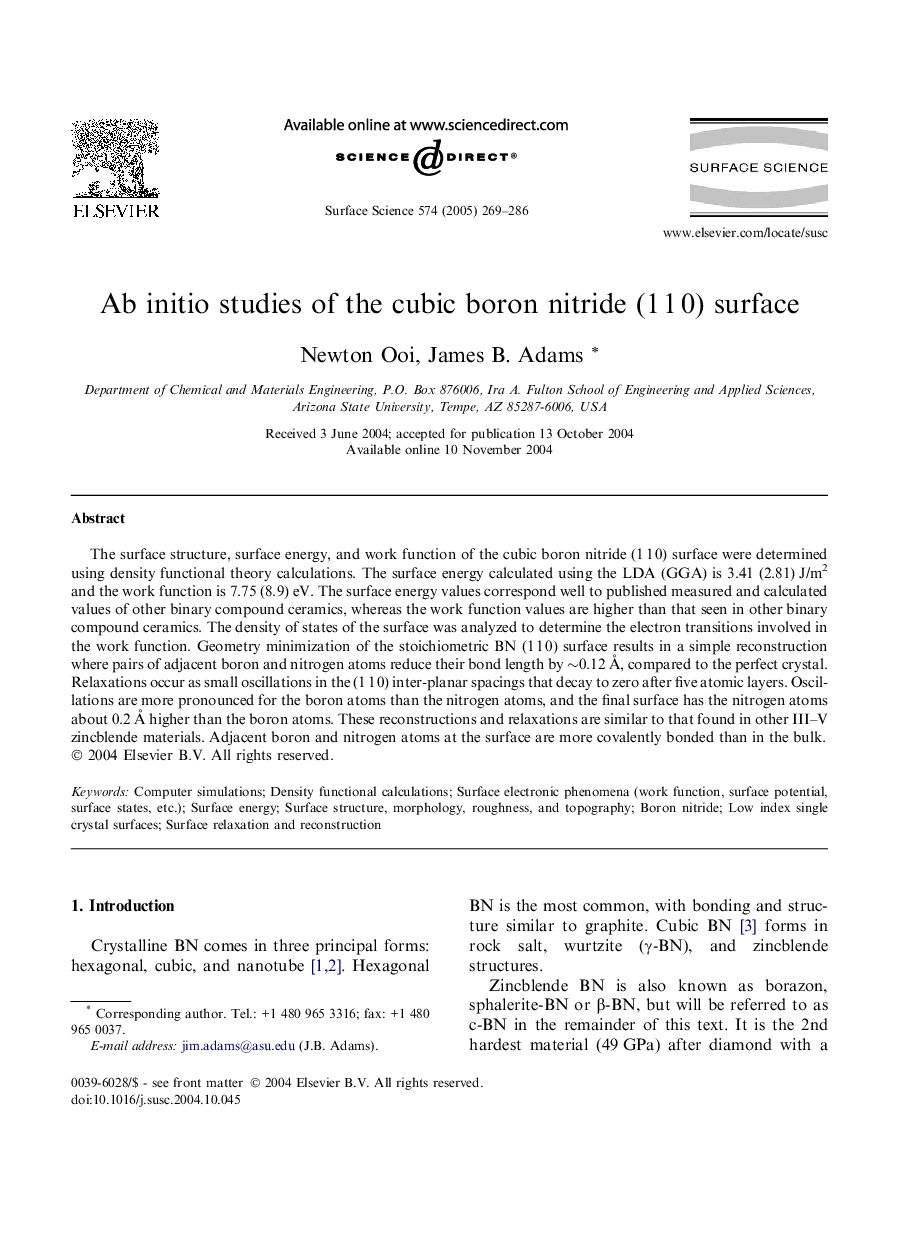| Article ID | Journal | Published Year | Pages | File Type |
|---|---|---|---|---|
| 9594708 | Surface Science | 2005 | 18 Pages |
Abstract
The surface structure, surface energy, and work function of the cubic boron nitride (1Â 1Â 0) surface were determined using density functional theory calculations. The surface energy calculated using the LDA (GGA) is 3.41 (2.81)Â J/m2 and the work function is 7.75 (8.9)Â eV. The surface energy values correspond well to published measured and calculated values of other binary compound ceramics, whereas the work function values are higher than that seen in other binary compound ceramics. The density of states of the surface was analyzed to determine the electron transitions involved in the work function. Geometry minimization of the stoichiometric BN (1Â 1Â 0) surface results in a simple reconstruction where pairs of adjacent boron and nitrogen atoms reduce their bond length by â¼0.12Â Ã
, compared to the perfect crystal. Relaxations occur as small oscillations in the (1Â 1Â 0) inter-planar spacings that decay to zero after five atomic layers. Oscillations are more pronounced for the boron atoms than the nitrogen atoms, and the final surface has the nitrogen atoms about 0.2Â Ã
higher than the boron atoms. These reconstructions and relaxations are similar to that found in other III-V zincblende materials. Adjacent boron and nitrogen atoms at the surface are more covalently bonded than in the bulk.
Keywords
Related Topics
Physical Sciences and Engineering
Chemistry
Physical and Theoretical Chemistry
Authors
Newton Ooi, James B. Adams,
